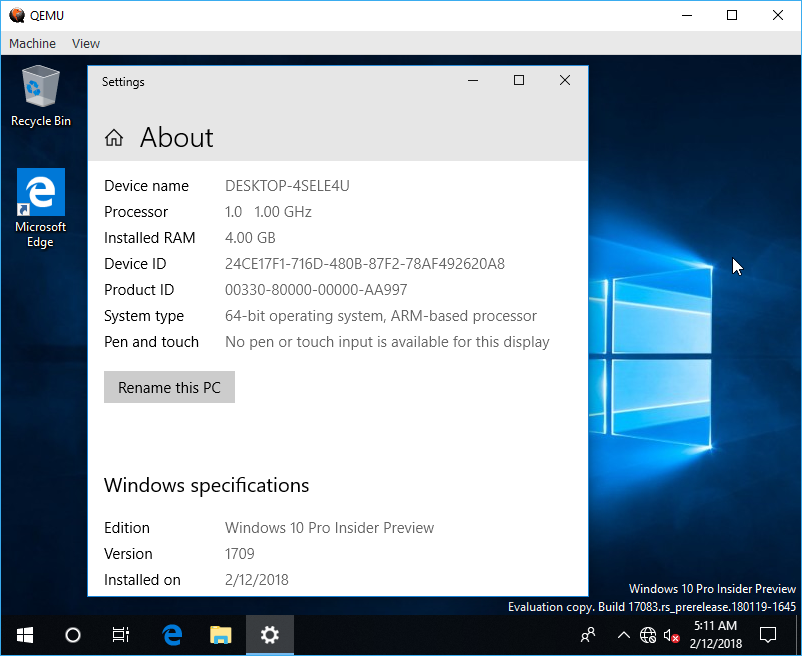
If we were running Linux, we could mount our virtual hard disk and copy the initrd from /root. Now you'll need a new initrd (remember, the other one contains the installer payload, not the directions to boot your media). Simply type q and hit Enter to close QEMU (or you can just hit the big, red, X-button Your call). This is where you can issue commands directly to the emulator. Wait for it to finish up and restart, then hit Control+Alt+2 to go to the QEMU console. What it means is that you cannot simply reboot the Virtual Machine to load your freshly installed Linux. When the installer is finally done, it will warn you that no boot loader was installed.


Now sit tight for what will be, depending on your connection, quite a long time. Once you hit enter, assuming you did everything right (be sure to have all required files in the same folder), you'll be greeted with a new window: It does help tons (pun intended) to replace Gnome with LXDE when everything runs so damn slow (no one said emulation was easy). Adding the desktop boot parameter allows you to choose an alternate desktop environment, in this case LXDE, the Lightweight X11 Desktop Environment, which, the RasPi team informs us, is what we'll probably get with their boot images. If you leave it out, you'll get the default Gnome desktop (assuming you install a desktop environment, a part we'll be getting into soon). Where networkname is the name of your TAP-Win32 adapter (you DO remember it, don't you?) and -append "desktop=lxde" is optional. kernel vmlinuz-2.6.32-5-versatile -initrd initrd.gz -hda hda.img -m 256 -M versatilepb -net nic -net tap,ifname= networkname -append "desktop=lxde" The latest stable Debian distribution for ARM can be found at point your browser there get initrd.gz and vmlinuz-2.6.32-5-versatile. Now you have your hard dirk image, kernel and initrd. When doing a networked install, the initrd contains the basic installer software, which will, in turn, download the rest of the Linux distribution from the internet. The initrd is the initial ramdisk, a file containing information the kernel expects to find inside your computer's memory in order to find bootable devices, etc.

To do it, you'll need two things: a kernel and an initrd. The kernel, as the name implies, is the core of the Linux operating system. You now have a virtual hard-drive where you're gonna install Debian. I recommend you always use 1024M instead of 1G when trying to make gigabyte-sized disks). Go figure (it seems crundy the RasPi forums had the same problem with 4G. for some reason, my qemu-img refused to accept 8G as an argument, so I entered 8096M instead. It accepts the format number+suffix, as in 256M for 256 megabytes or 2G for gigabytes, etc. Where imagesize is the size of the disk you wish to create for your emulated device.


 0 kommentar(er)
0 kommentar(er)
